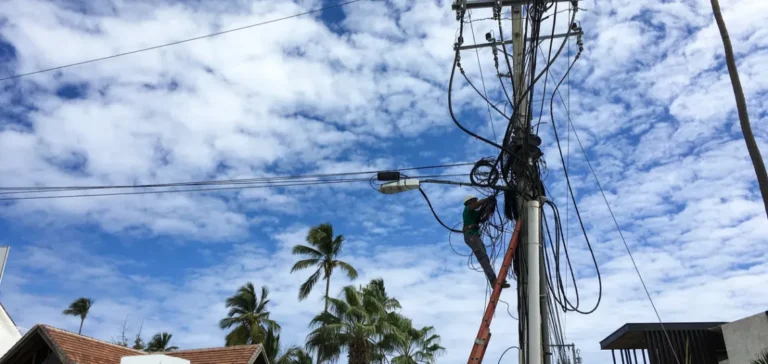A large-scale power outage struck the Dominican Republic, affecting the capital Santo Domingo, the tourist hub of Punta Cana and several other urban areas across the country. The national electricity grid suffered a major disruption due to a failure in the transmission system, according to Dominican authorities.
A nationwide blackout disrupts essential services
The outage began in the early afternoon, causing a complete halt of the capital’s two metro lines as well as the urban cable car system. Traffic lights went out, worsening congestion in urban centres. The Office for the Reorganisation of Transport (OPRET) confirmed that the metro stopped operating at 1:25 p.m. local time and that passengers were evacuated without incident.
Despite the sudden disruption, telecommunications services continued to operate normally. Testimonies collected on site indicated that many residents had to travel on foot due to the suspension of public transport. Authorities implemented a replacement bus system to ease mobility.
Partial recovery monitored by the government
Minister of Energy and Mines Joel Santos stated that the outage caused a general collapse of the electricity system. In a press conference, he reported that current generation capacity had reached 455 megawatts, around 15% of estimated national demand. He pledged an investigation to identify the exact causes of the failure.
Signs of gradual recovery have been observed, particularly in some districts of Santo Domingo, where street lighting and digital billboards have resumed functioning. However, most of the country remains without stable power supply.
Electrical grid under strain for weeks
The blackout occurs in the context of ongoing stress on the Dominican energy system. In recent weeks, several regions have reported frequent and extended outages caused by technical failures, lack of preventive maintenance, illegal connections and delayed user payments.
Chairman of the Council of Electricity Distribution Companies, Celso Marranzini, recently linked the recurring outages to a combination of structural issues that undermine the reliability of energy supply.
The Dominican Republic, home to more than 11 million people, relies heavily on stable infrastructure to support its tourism-driven economy. In 2022, nearly 8 million visitors were recorded, highlighting the strategic importance of the energy sector in maintaining economic continuity.






















